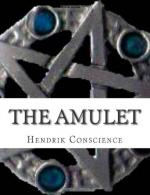The escutcheon of the Van de Werve family, together with the families allied to them, was artistically sculptured in the wood. The emblems and devices were in profusion: lions, wild boars, eagles, ermines, bands and crosses of gold, silver, green, and blue quartz, so numerous and sparkling, that when the noonday sun penetrated into the hall, the eye could with difficulty bear the dazzling magnificence.
The armorial bearings of the Van de Werves, Lords of Schilde, painted in larger proportions than the others, were at the extremity of the hall. They consisted of a black boar on a field of gold, quartered by three chevrons of silver on black, surmounted by a helmet ornamented by mantlings of black and gold, and above this was a boar’s head.
Around these family arms shone a large number of escutcheons of smaller size; among others, the coat of arms of the Wyneghem, the Van Immerseel, the Van Wilre, the Van Mildert, the Van Coolput, the Van Bruloch, and the Van Zymaer, families the most nearly related to that of Van de Werve.
Above the wainscot, within the niches formed by the pillars, hung the portraits of some of the most illustrious ancestors of William Van de Werve, as well as his own, in which he was represented as captain of a German company in the service of Charles V.
The portraits did not occupy all the panels formed in the richly carved oak. In a large number appeared valuable paintings from the pencil of the most celebrated masters of Netherlands. The eye rested on the creations of the immortal brothers Van Eyck, the touching Quintin Massys, the intellectual Roger Van der Weydens, the spiritual Jerome Bosch, the laborious Lucas de Leyde, and others whose names were favorably mentioned in the world of art.
In a corner of the room, beside the fireplace, stood a piano richly enamelled in woods of different colors, and upon it lay two lutes and a violin—a proof that the charming art of music was cultivated by the family of Mr. Van de Werve.
From the ceiling were suspended six gilded chandeliers; on the mantelpiece were two candelabras; along the walls, where the pillars formed projections, numerous sconces were fastened; and when Mr. Van de Werve received his friends in the evening, the reflection of the numberless wax candles from the many gold and silver ornaments gave a princely air to the hall.
Three days after the attempted assassination of Geronimo by the ruffian Bufferio, Mr. Van de Werve was to entertain his friends in the evening, it being the time appointed for their reunion. Although he had been deeply moved by the murderous assault, and his daughter Mary had scarcely recovered from the shock, he had not withdrawn the invitations, hoping that the social gathering might help to dissipate painful thoughts.
At the appointed hour the dwelling of Mr. Van de Werve was in a blaze of light. The large double door was thrown open, and in the vast hall were crowds of domestics, the attendants of the guests who had already arrived.




